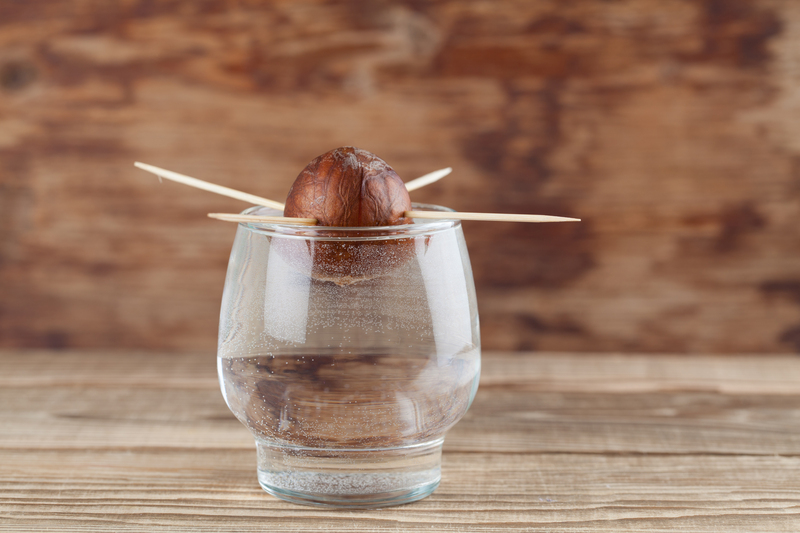Preparing Your Garden Plants for a Cold Winter
Posted on 02/09/2025
Preparing Your Garden Plants for a Cold Winter: An Essential Guide
When the days grow shorter and the air begins to carry a crisp chill, it's time for gardeners to start thinking about preparing your garden plants for a cold winter. The transition from autumn to winter can be tough on your beloved perennials, shrubs, and even annuals. Yet, with mindful preparation and strategic care, you can ensure your plants withstand cold snaps, frost, and freezing temperatures. This comprehensive guide will walk you through the best techniques to protect your garden plants from winter damage and set them up for a healthy spring resurgence.
Why Preparing Your Garden Plants for Winter Matters
Winter can be a challenging season for gardeners and their plants. Cold weather can:
- Damage plant tissues through freezing and thawing cycles.
- Desiccate (dry out) evergreens due to harsh winds and sun exposure.
- Heave root systems out of the ground as soil freezes and thaws.
- Encourage fungal diseases through lingering dampness and mulch misuse.

Assessing Your Garden Before Winter Arrives
The first step in winter plant preparation is to thoroughly assess your garden. Start by:
- Identifying vulnerable plants: Map out tender perennials, young shrubs, newly planted trees, and exotic species that might need extra insulation.
- Checking for disease or pests: Remove or treat any infected foliage or stems to prevent overwintering pests and pathogens.
- Cleaning debris: Fallen leaves, dead annuals, and garden litter should be composted or discarded to prevent rot and pests.
General Steps for Winterizing Your Garden Plants
1. Prune with Care
Pruning is vital, but timing and technique matter.
- **Prune only when necessary:** Avoid heavy pruning of perennials and shrubs late in the season, as this may prompt tender new growth.
- **Remove dead or diseased wood:** Trim away what's clearly nonviable to reduce the risk of disease overwintering.
- **Shape evergreens lightly:** Minimal shaping is fine for conifers and broadleaf evergreens, but avoid aggressive pruning.
2. Water Wisely
Moist soil holds heat better than dry soil--but overwatering can lead to rot. In late autumn, as plants go dormant:
- Deep-water before soil freezes, especially for trees, shrubs, and new plants.
- Stop routine irrigation once the ground has frozen or when plants go completely dormant.
- Check for waterlogging: Amending clayey or compacted soil can improve drainage and prevent root rot.
3. Mulch Your Beds
Mulching is a key component of winter plant protection:
- Apply fresh mulch (2-4 inches) around the base of perennials, trees, and shrubs.
- Use natural materials like shredded leaves, straw, pine needles, or bark chips.
- Avoid direct contact between mulch and plant stems to prevent rot.
4. Protect Plant Roots
Extreme cold penetrates deep soil and can damage root systems. For sensitive plants:
- Heap extra mulch ("mulch volcanoes") around vulnerable species.
- Move container plants closer to buildings or inside garages, as pots are especially sensitive to cold (the soil inside freezes faster).
- Use plant collars or protective wraps on young trees.
Specialized Strategies for Different Plant Types
1. Perennials
Cut back foliage only after it browns and wilts naturally--this allows nutrients to return to the roots. For certain perennials, like ornamental grasses, stems can be bundled to protect crowns from moisture and freezing.
2. Shrubs and Trees
Young trees and shrubs suffer most from winter's wrath, particularly from:
- Frost cracks on trunks: Use tree wraps or reflective collars to insulate bark and prevent sunscald.
- Rodent gnawing: Wrap lower trunks with hardware cloth or special tree guards.
- Snow breakage: Gently brush off heavy snow from branches to prevent snapping.
3. Evergreens
Evergreens are vulnerable to winter burn--a condition where frozen ground prevents water uptake but wind and sun still dry out the leaves.
- Water deeply before the ground freezes.
- Mulch generously around root zones.
- Shield from wind with burlap screens or windbreak fencing.
4. Annuals and Tender Bulbs
Most annuals complete their lifecycle by frost, but for those with continued bloom, cover them on cold nights with garden fabric or cloches.
- Dig up and store tender bulbs like dahlias, cannas, and gladiolus after the first hard frost. Clean them, allow to dry, and store in sawdust or peat moss in a cool, dry place.
Protecting Container Plants in Winter
Preparing garden containers for cold weather requires special care:
- Move pots to a sheltered spot, such as against a house wall or in a garage.
- Group containers together for added insulation.
- Wrap pots with burlap, bubble wrap, or old blankets to keep roots from freezing.
- Reduce watering as plants go dormant, but don't let soil dry out completely.
- Raise pots off cold, wet ground by setting them on bricks or pot feet for extra drainage.
Extra Insulation: Using Cold Frames, Row Covers, and Cloches
For those who want to keep harvesting leafy greens or simply give tender plants extra coverage, consider these options:
- Cold frames: Small, low structures covered with glass or clear plastic to trap warmth and protect from frost.
- Row covers: Lightweight blankets that create a microclimate over your garden beds.
- Cloche: Individual glass domes or plastic covers placed over especially delicate plants.
Winter Lawn and Soil Care
1. Final Lawn Maintenance
As part of garden winterization, don't neglect your lawn:
- Mow grass short on the final cut of the season to reduce disease risk.
- Spread a light layer of compost or well-rotted manure to help soil fertility during winter dormancy.
- Remove fallen leaves to avoid smothering and turf diseases.
2. Prepare Soil for Spring
Winter is an ideal time to:
- Test your soil to assess pH and nutrient needs.
- Add organic matter such as compost or leaf mold, which breaks down and enriches soil as you wait for spring planting.
- Plant cover crops (green manure) like rye, clover, or vetch to add organic matter and prevent erosion.
Garden Tools and Support Structures
Protecting your garden means not just the plants, but your tools and supports as well:
- Clean and oil garden tools to prevent rust.
- Store supports and stakes safely to prevent damage from winter storms.
- Drain hoses and irrigation systems to avoid cracking in freezing weather.
Dealing with Unexpected Winter Weather Events
Even the best-laid plans can fail in the face of extreme weather:
- Sudden frost forecasted? Cover plants with bedsheets, frost blankets, or even cardboard boxes overnight.
- Heavy snow? Shake loose snow off branches in the morning to prevent breakage.
- Ice storms? Let ice melt naturally--breaking it off can damage bark and stems.
Winter Wildlife and Your Garden
Winter brings new visitors such as deer, rabbits, and vole that search for food:
- Install fencing or mesh around valuable shrubs and young trees.
- Consider repellents or motion-activated lights for large gardens.
- Remove accessible food waste to avoid attracting unwanted animals.
Late Winter and Early Spring: Removing Protections
As winter wanes:
- Gradually remove mulch layers as days warm to prevent root suffocation and encourage new growth.
- Unwrap tree trunks once risk of hard frost passes.
- Monitor for heaving: Re-set plants displaced by freeze-thaw cycles.
- Look for fungus or mold in older mulch and swap or compost as needed.

Frequently Asked Questions About Winter Garden Preparation
- Q: Can I fertilize my garden in late fall?
A: Stop fertilizing most perennials, woody shrubs, and trees by late summer. Fall fertilization may prompt new, tender growth that cannot tolerate freezing. Instead, feed in spring or early summer. - Q: What is the best mulch for winter plant protection?
A: Use organic, loose materials such as shredded bark, pine needles, straw, or composted leaves. Avoid non-breathable materials or those prone to maturing fungi and mold. - Q: Should vegetable gardens be covered in winter?
A: Yes, cover with mulch or a cover crop to protect soil structure and fertility. For overwintering crops (like garlic and spinach), use straw or row covers. - Q: Do I need to bring in all container plants?
A: Only tender perennials (like tropicals) and non-hardy species need to come indoors. Hardy containers that can withstand freezing can be left outside with extra protection.
Conclusion: Embracing Winter in Your Garden
The key to preparing your garden plants for a cold winter is thoughtful planning and dedication. By following these expert tips--assessing plant needs, mulching, pruning, watering strategically, and employing protective structures--you'll help your landscape thrive through the coldest months.
While winter may seem like a time for garden rest, your plants are simply conserving energy for spring's explosive growth. A well-prepared garden is a sign of a proactive gardener who reaps the rewards come warmer days. So, bundle up, get outside, and set your garden up for success--even when the world is blanketed in snow.
Ready to master the art of winter plant care? Bookmark this guide and revisit it each autumn for a reliable, proven path to a healthy, beautiful garden all year round.

